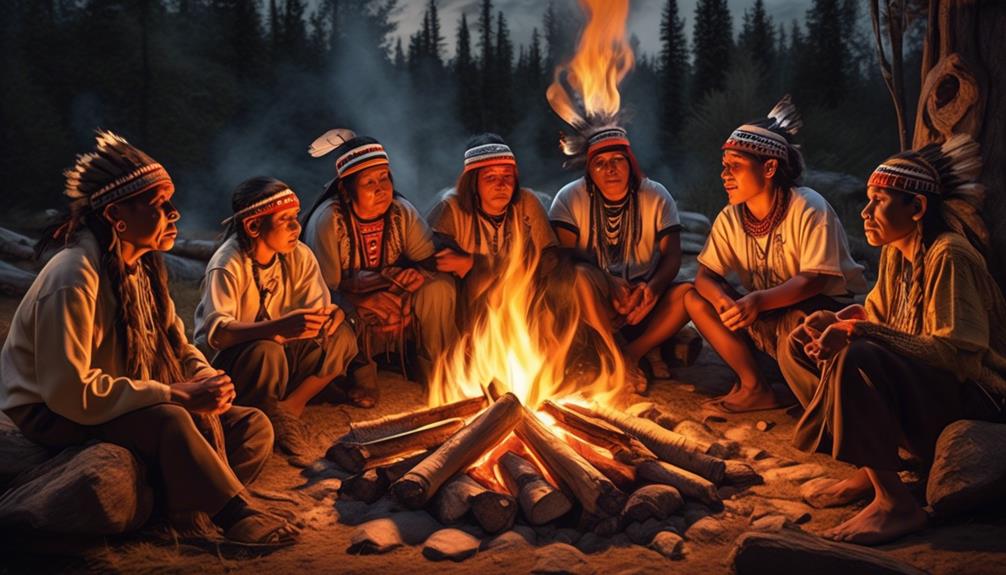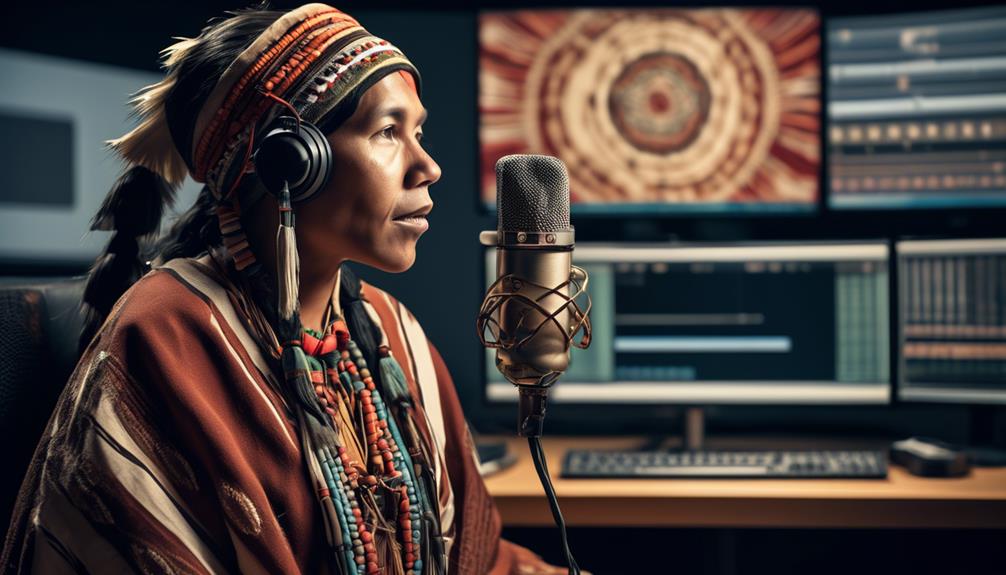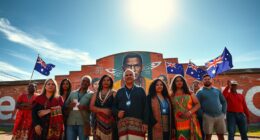It is commonly acknowledged that a concerning 40% of the world’s 7,000 languages are at risk of disappearing, with a majority of them being Indigenous languages. The urgency to protect and revitalize these invaluable linguistic assets is greater than ever.
As we explore the impact of training programs for Indigenous language specialists, we'll uncover how these initiatives play a pivotal role in not only safeguarding endangered languages but also in empowering Indigenous communities to reclaim and celebrate their cultural identities.
The ripple effects of these programs extend far beyond linguistic preservation, and the results are truly transformative.
Key Takeaways
- Indigenous language preservation is important for safeguarding cultural heritage and traditional knowledge, fostering community cohesion, promoting self-expression, and maintaining a rich tapestry of traditions and values.
- Training programs for indigenous language specialists should emphasize integrated language skills, incorporate cultural heritage preservation, encourage community engagement and collaboration, and integrate modern technology while being tailored to meet linguistic and cultural needs.
- Mentorship and community engagement are crucial for ensuring language continuity, transmitting traditional knowledge, safeguarding against forced assimilation, empowering individuals in language preservation, and strengthening bonds of cultural heritage.
- Opportunities for language documentation, such as collaborative efforts in documenting endangered languages, development of dictionaries and educational materials, preservation of cultural heritage and oral traditions, and support for language revitalization efforts, can foster unity, shared purpose, and the preservation of rich cultural heritage and traditional knowledge.
Importance of Indigenous Language Preservation
Preserving Indigenous languages is crucial for safeguarding cultural heritage and traditional knowledge, fostering community cohesion, and promoting self-expression. Language is the cornerstone of cultural identity, and the preservation of Indigenous languages is essential for maintaining the rich tapestry of traditions and values within Indigenous communities.
It serves as a means of passing down traditional knowledge from one generation to the next, creating a strong sense of continuity and connection to the past. Language revitalization efforts not only preserve linguistic diversity but also contribute to the overall well-being of Indigenous communities by instilling a sense of pride and belonging.
Furthermore, the act of language learning itself becomes a powerful tool for healing and rebuilding what was lost due to historical colonization. By recognizing the importance of preserving Indigenous languages, we honor the resilience and strength of Indigenous peoples, while also acknowledging the fundamental human right to linguistic diversity.
It's through the preservation of Indigenous languages that we truly uphold the cultural heritage and traditions that have been passed down through generations.
Training Program Curriculum Overview
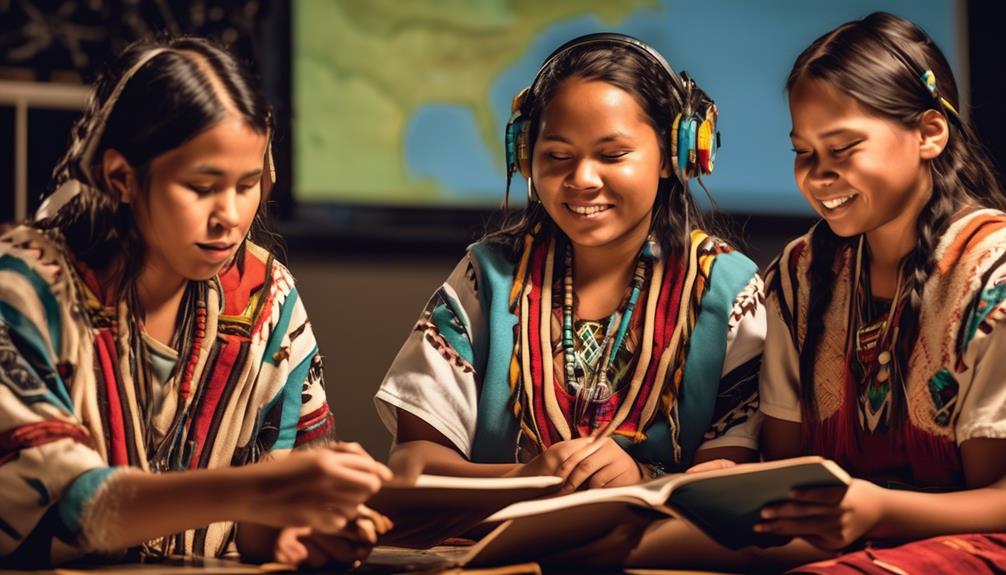
The curriculum for training programs for Indigenous language specialists is designed to equip them with the necessary skills and knowledge for language preservation, documentation, and revitalization techniques. Our program is specifically tailored to meet the unique linguistic and cultural needs of indigenous communities.
Here's an overview of our curriculum:
- Integrated Language Skills: Our training program emphasizes the development of language skills, including phonetics, grammar, and vocabulary, necessary for effectively preserving Indigenous languages.
- Cultural Heritage Preservation: We incorporate traditional teaching methods and cultural practices to ensure the preservation of traditional cultural knowledge and practices, empowering indigenous communities to maintain their linguistic and cultural heritage.
- Community Engagement and Collaboration: We place a strong emphasis on community engagement, encouraging collaboration with indigenous communities to ensure that the revitalization efforts align with their cultural values and needs.
Our curriculum integrates modern technology to support language preservation efforts, providing our language specialists with the tools and knowledge needed to make a meaningful impact in their communities.
Mentorship and Community Engagement
Our training program's emphasis on community engagement and collaboration aligns with our commitment to empowering indigenous communities in their language preservation and revitalization efforts.
Mentorship is crucial for the transmission of indigenous languages and cultural knowledge. By building strong mentorship programs within the indigenous community, we foster language continuity and ensure that traditional knowledge is passed down to the next generation. Through mentorship, indigenous language specialists can play a vital role in preserving native languages and cultures, safeguarding them against the historical impact of forced assimilation and human rights violations.
Community engagement initiatives provide essential support, resources, and opportunities for language learners and enthusiasts, creating a supportive environment for language preservation and revitalization. Collaborative efforts within the indigenous community not only strengthen the bonds of cultural heritage but also empower individuals to take an active role in preserving their native language.
Our program recognizes the significance of mentorship and community engagement in ensuring the enduring legacy of indigenous languages and cultures.
Opportunities for Language Documentation
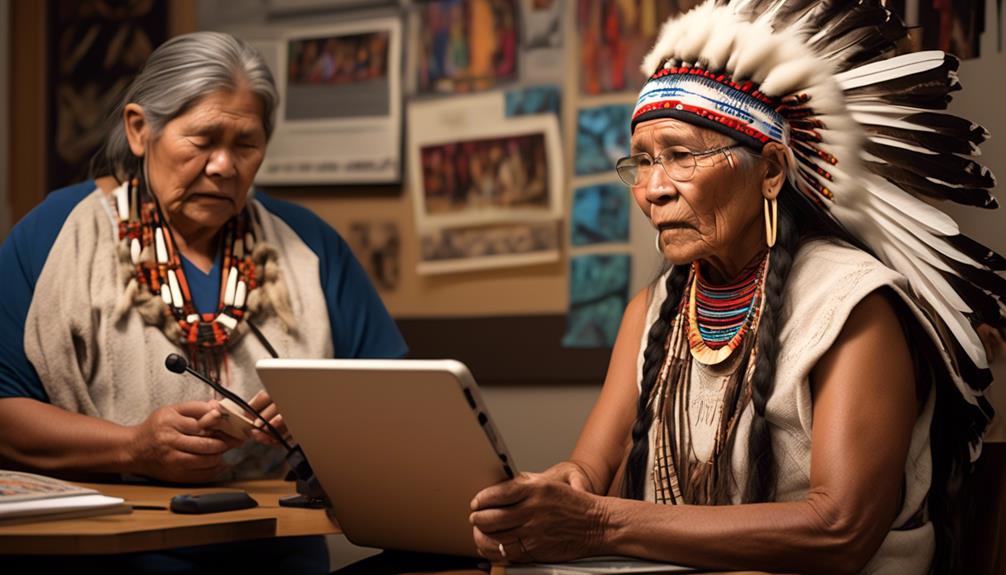
Language documentation provides valuable opportunities for recording and preserving endangered languages for the benefit of future generations. This process allows us to systematically collect and analyze linguistic data, creating vital resources for language revitalization efforts. Through language documentation, communities can archive their oral traditions, stories, and cultural practices, ensuring their preservation and passing them down to future generations. This not only strengthens indigenous cultures but also fosters the diversity of languages within the United States, particularly those of American Indian and Native Languages.
Opportunities for Language Documentation:
- Collaboration: Language documentation offers the chance for linguists, community members, and educators to collaborate in documenting and revitalizing endangered languages, fostering a sense of unity and shared purpose.
- Educational Materials: It can lead to the development of dictionaries, educational materials, and language learning resources, providing essential tools to support language revitalization efforts and promote the continued use of indigenous languages.
- Preservation of Cultural Heritage: Language documentation allows for the preservation of cultural practices, oral traditions, and stories, contributing to the rich tapestry of Indigenous cultures and ensuring their legacy for future generations.
Impact on Cultural Heritage
Safeguarding indigenous languages is crucial for preserving the rich cultural heritage, traditional knowledge, and identity of native communities. The use of indigenous languages isn't just a means of communication; it embodies the cultural values and history of indigenous people.
By learning and using indigenous languages in our learning environment, we honor the cultural heritage and connect with the wisdom of local communities. The impact of language preservation goes beyond just words; it shapes the mental and emotional well-being of community members, fostering pride and a sense of belonging.
Furthermore, preserving indigenous languages contributes to historical reconciliation and the conservation of knowledge that has been passed down through generations. It plays a vital role in reclaiming American Indian identity and restoring what was affected by colonization.
Therefore, by empowering individuals to become language specialists, we aren't only preserving linguistic diversity but also ensuring the continuity of cultural heritage for generations to come.
Frequently Asked Questions
How Can We Promote Indigenous Languages?
We can promote indigenous languages through community involvement, educational resources, and advocacy efforts. Language immersion, intergenerational learning, and cultural preservation are vital.
Digital technology can enhance language preservation efforts. Government support is crucial for linguistic diversity.
Why We Would Want to Revitalize Indigenous Languages?
Revitalizing indigenous languages is crucial for preserving heritage, fostering identity, and empowering communities. It promotes diversity, language preservation, cultural revival, and educational opportunities.
This endeavor instills indigenous pride and ensures linguistic sustainability. By reviving these languages, we honor and respect the rich cultural tapestry that defines our world. It's a testament to the resilience of indigenous communities and a step towards historical reconciliation.
What Is the Revitalization of Indigenous Language Based Education in the Us?
The revitalization of Indigenous language-based education in the US is crucial for cultural preservation and reclaiming our indigenous heritage. Language immersion, community involvement, and educational resources are essential for language revitalization.
By preserving linguistic diversity, we honor our cultural identity. It's alarming that around 20 Indigenous languages may be lost by 2050.
Empowering language specialists is vital to this mission, ensuring the next generation inherits the richness of our indigenous languages.
In What Ways Does the Loss of Indigenous Languages Signify a Loss of Knowledge and Cultural Diversity?
The loss of indigenous languages signifies a loss of knowledge and cultural diversity. Preserving traditions, oral storytelling, and indigenous knowledge are crucial for maintaining historical significance and cultural heritage.
The educational impact of language preservation is immense, fostering community resilience and linguistic diversity. Without indigenous languages, valuable insights into environmental sustainability are lost.
It's vital to recognize the importance of preserving these languages for the benefit of future generations.
Conclusion
In conclusion, these training programs are absolutely essential for the survival of Indigenous languages. They're like the lifeblood of our cultural heritage, pumping vitality and strength into our communities.
Without them, our languages would be on life support, gasping for air. But with these programs, our languages are thriving, singing with the energy of our ancestors.
It's like a symphony of resilience and pride, echoing through the generations.
